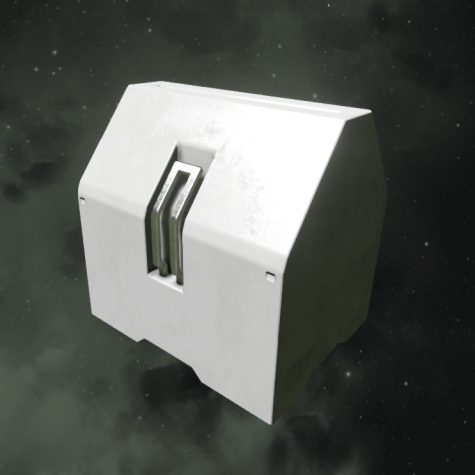Blast Door Edge


Door block information is listed in the table down below.
| Components | Required |
| Steel Plate | 15 |
| Functional | |
| Steel Plate | 115 |
| Info | |
| Dimensions (W,H,L) | 1,1,1 |
| Mass | 2,600 kg |
| Integrity | 13,000 |
| Build Time | 14 s |
| Deformation Ratio | 20% |
| Disassemble Ratio | 300% |
| Is Airtight | No |
| PCU Cost | 1 |
| Components | Required |
| Steel Plate | 2 |
| Functional | |
| Steel Plate | 3 |
| Info | |
| Dimensions (W,H,L) | 1,1,1 |
| Mass | 100 kg |
| Integrity | 500 |
| Build Time | 3 s |
| Deformation Ratio | 24% |
| Disassemble Ratio | 300% |
| Is Airtight | No |
| PCU Cost | 1 |
Overview
The purpose for the blast door block is to allow the passage between blocks without damaging them. Two of its sides have half a meter of space between it and its neighboring block. The front narrow edge also allows it to slide smoothly against other blocks. This in turn allows for the creation of doors mechanically controlled by rotors and/or pistons that can slide next to other blocks without any damage occurring.
Usage
Blast door blocks are similar to armor blocks, however have a narrow profile on top and smaller collision box so not to damage surrounding blocks. These can be used in conjunction with pistons for example to create a large functioning door.
The blast door has been made mostly obsolete by the Airtight Hangar Door.
Media
|
Detailed view of the blast door edge and its slim sides, as well as the narrow edge in front |
View of the blast door edge, small ship version (left), and large ship / station (right) |
Tips
- All blast door blocks currently have no deformation enabled, meaning they will stay the same shape till they are completely destroyed
- Since blast doors have a gap and pistons are never airtight, a room with a blast door leading to space is impossible to pressurize.


